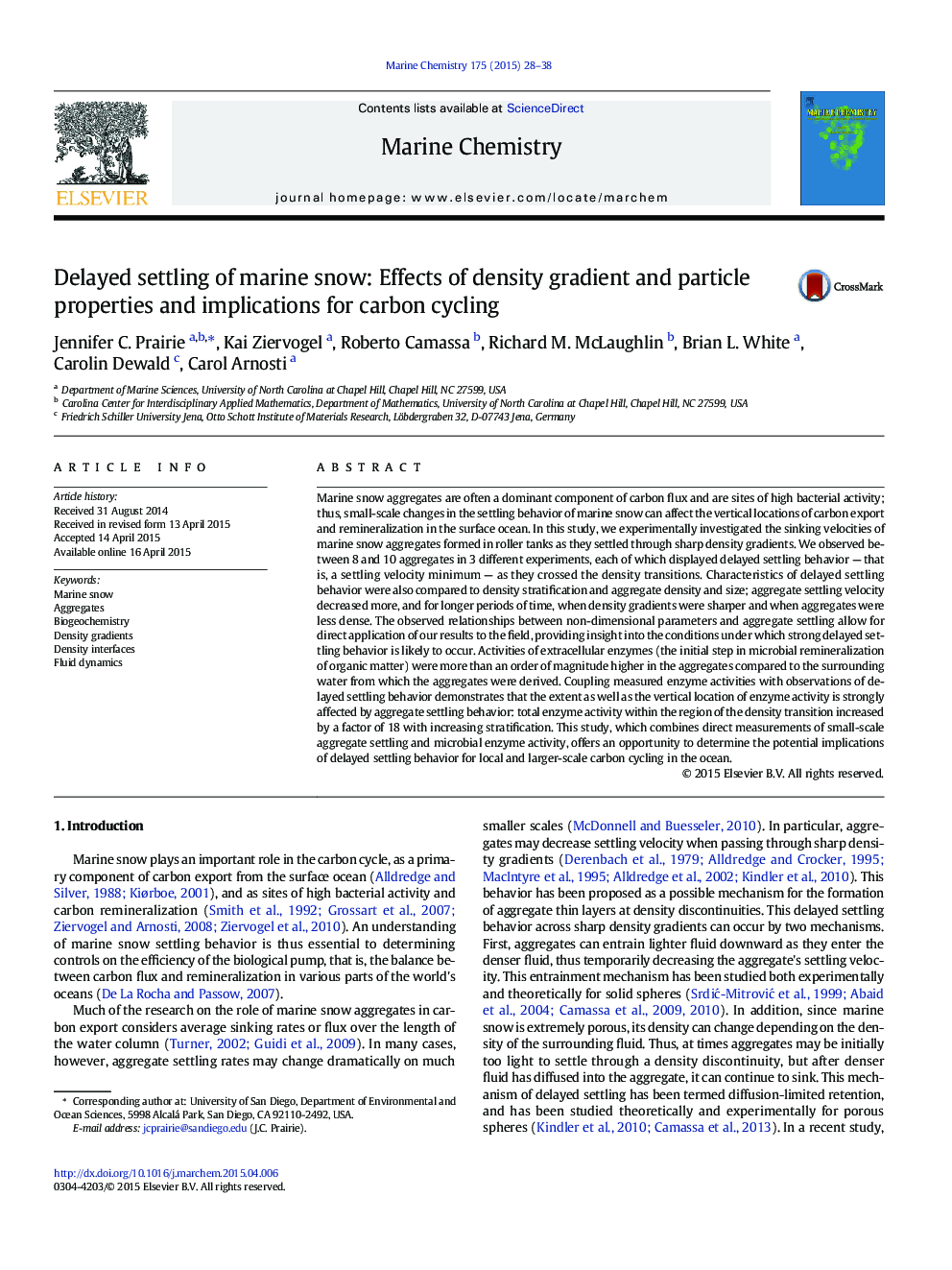| Article ID | Journal | Published Year | Pages | File Type |
|---|---|---|---|---|
| 7699259 | Marine Chemistry | 2015 | 11 Pages |
Abstract
Marine snow aggregates are often a dominant component of carbon flux and are sites of high bacterial activity; thus, small-scale changes in the settling behavior of marine snow can affect the vertical locations of carbon export and remineralization in the surface ocean. In this study, we experimentally investigated the sinking velocities of marine snow aggregates formed in roller tanks as they settled through sharp density gradients. We observed between 8 and 10 aggregates in 3 different experiments, each of which displayed delayed settling behavior - that is, a settling velocity minimum - as they crossed the density transitions. Characteristics of delayed settling behavior were also compared to density stratification and aggregate density and size; aggregate settling velocity decreased more, and for longer periods of time, when density gradients were sharper and when aggregates were less dense. The observed relationships between non-dimensional parameters and aggregate settling allow for direct application of our results to the field, providing insight into the conditions under which strong delayed settling behavior is likely to occur. Activities of extracellular enzymes (the initial step in microbial remineralization of organic matter) were more than an order of magnitude higher in the aggregates compared to the surrounding water from which the aggregates were derived. Coupling measured enzyme activities with observations of delayed settling behavior demonstrates that the extent as well as the vertical location of enzyme activity is strongly affected by aggregate settling behavior: total enzyme activity within the region of the density transition increased by a factor of 18 with increasing stratification. This study, which combines direct measurements of small-scale aggregate settling and microbial enzyme activity, offers an opportunity to determine the potential implications of delayed settling behavior for local and larger-scale carbon cycling in the ocean.
Related Topics
Physical Sciences and Engineering
Chemistry
Chemistry (General)
Authors
Jennifer C. Prairie, Kai Ziervogel, Roberto Camassa, Richard M. McLaughlin, Brian L. White, Carolin Dewald, Carol Arnosti,
